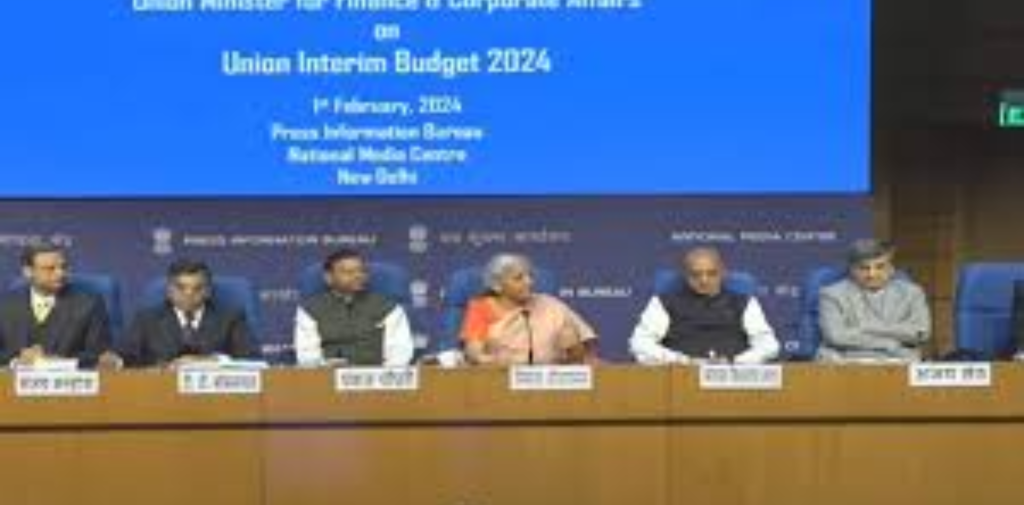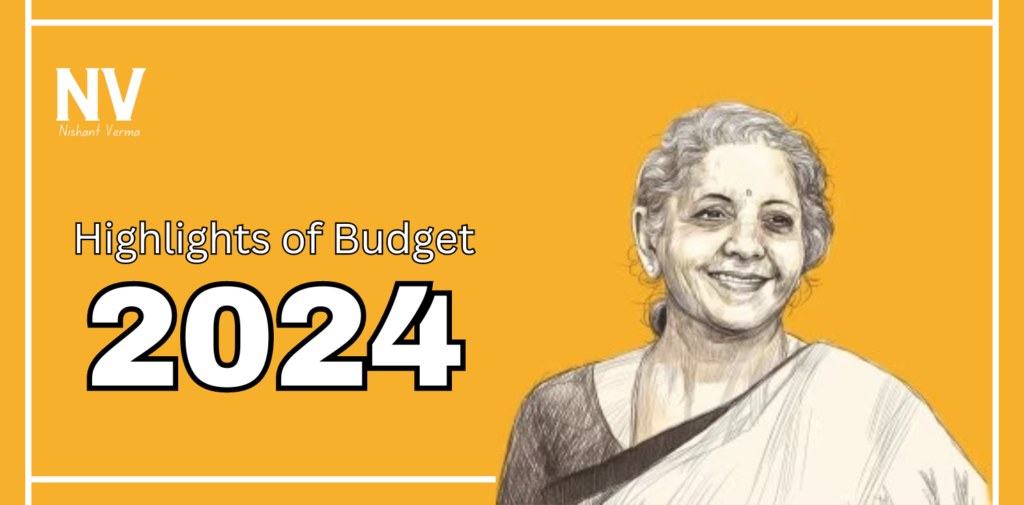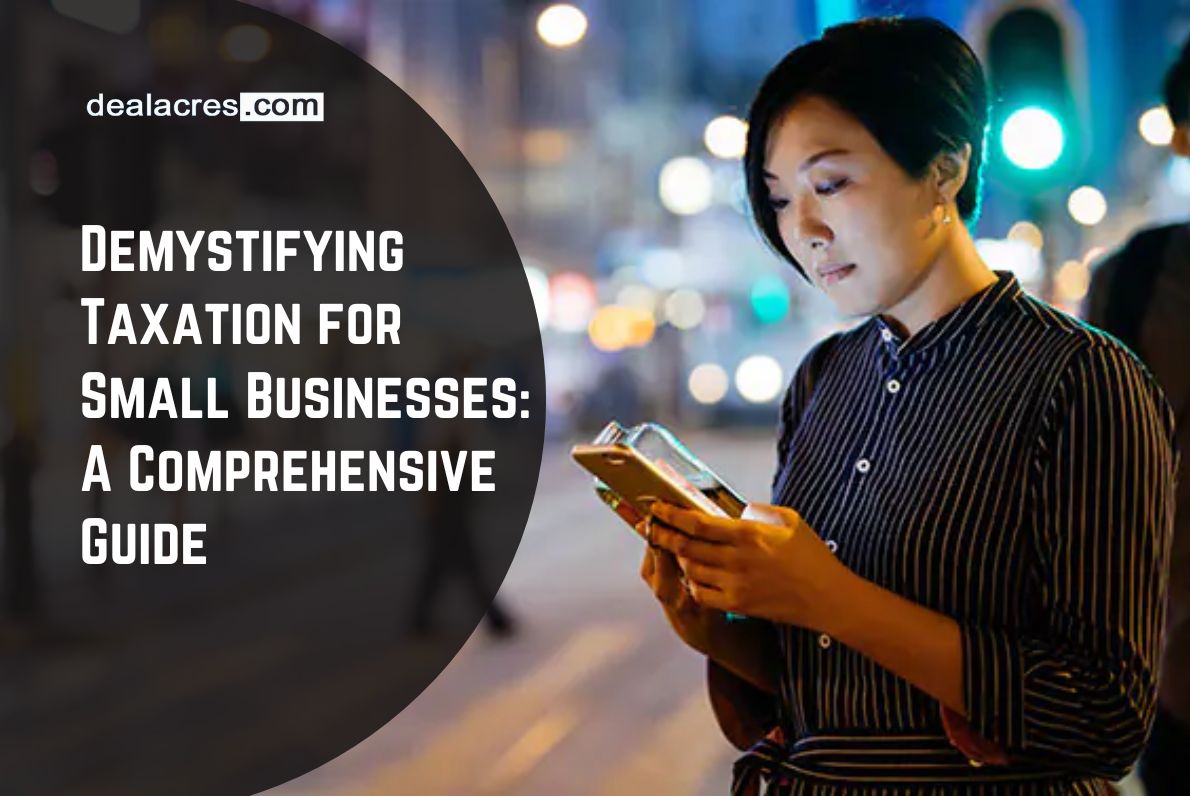Introduction:
The Budget is like a big financial plan for the country. Budget Day in India is a big deal, and this year’s Budget 2024 has some key points, even though it’s an Interim Budget. Let’s break budget highlights down in simple language.
This year, instead of a full Budget, we have an Interim Budget due to upcoming elections. The Finance Minister, Smt. Nirmala Sitharaman shared the plan called “Viksit Bharat Budget 2024,” focusing on Atma Nirbhar Bharat or India’s self-reliance and the well-being of people with low incomes, women, youth, and farmers.
Interim Budget 2024 Direct Taxes:
No Tax for Low Incomes: You won’t have to pay any income tax if you earn up to Rs. 7 lakh.
Corporate Taxes: Companies will have a 22% tax rate, and new manufacturing companies will have 15%.
Budget Highlights Goods and Services Tax (GST):
More Money Collected: The government collected double the monthly GST compared to before.
Customs Rates Stay the Same: The rates for customs, like import duties, will remain as they are.

Visit Bharat 2047:
- Four Pillars: The Budget 2024 focused on improving the lives of low-income people, women, youth, and farmers.
- Infrastructure Boost: Plans to develop physical, digital, and social infrastructure.
- Financial Inclusion: A plan to include more people in the formal economy.
- Inflation Management: Taking steps to control rising prices.
Garib Kalyan, Desh ka Kalyan:
- Direct Benefit Transfer (DBT): It saved a lot of Money – Rs. 2.7 lakh crore.
- Reducing Poverty: 25 crore people moved out of poverty.
- Help for Street Vendors: 78 lakh street vendors got credit assistance.
Empowering the Youth:
- Skill Development: Trained 1.4 crore young people under the Skill India Mission.
- Entrepreneurship: 43 crore loans given under PM Mudra Yojana.
- Financial Support: Rs.1 lakh crore fund for tech-savvy youth.
Welfare of Farmers (Annadata):
- Financial Aid: 11.8 crore farmers got direct financial assistance.
- Crop Insurance: 4 crore farmers got insurance under PM Fasal Bima Yojana.
- Market Integration: 1,361 mandis connected under eNAM.
Nari Shakti:
- Women Entrepreneurs: 30 crore Mudra Yojana loans for women.
- Education: More women in higher education and STEM courses.
- Self-Help Groups: 83 lakh groups helping one crore women become financially independent.
Sustainable Development/Green Energy:
- Environment Focus: Plans for “Net Zero” by 2070.
- Wind Energy Support: Funding for offshore wind energy.
- Coal Alternatives: Plans for coal gasification and liquefaction.
- Electricity for Homes: Rooftop solar power for one crore households.
Infrastructure and Investment:
- Railway Development: Three major energy, mineral, and cement corridor programs.
- Foreign Investment: Encouraging investments from other countries.
- Urban Projects: Improving airports, metro rail, and urban development.
Inclusive Development:
- Aspirational District Program: Helping districts develop faster.
- Healthcare: Vaccination for cervical cancer, improving Anganwadi centres.
- Housing: More houses for rural areas and a scheme for middle-class housing.
- Tourism: Developing tourist centres in states and providing loans.
Agriculture and Food Processing:
- Post-Harvest Investment: Promoting investment after harvesting crops.
- Dairy Development: A comprehensive program for dairy development.
- Aquaculture Boost: Strengthening fish farming with new aquaparks.
Allocations for Ministries and Schemes:
- Money for Rural Employment: Rs.86,000 crore for job schemes.
- Health Scheme Funds: Rs.7,500 crore for Ayushman Bharat.
- Tech Incentives: Rs.6,200 crore for semiconductor development.
- Green Energy Support: Rs.8,500 crore for solar power.

Interim Budget vs. Full Budget:
An interim budget is like a temporary financial plan until a new government is formed. It focuses on routine expenses, and major changes are usually off the table due to election rules.
- Temporary Budget: It’s a placeholder until a new government is formed.
- No Big Changes: No major policy changes because of election rules.
- Vote on Account: Government can use Money for essential things until a new government takes over.
Budget 2024 Expectations:
Finance Minister Smt. Nirmala Sitharaman has kept expectations low, focusing on essential expenses. Some anticipated changes include ESOP taxation, home loan interest limits, medical insurance deductions, and more.
- ESOP Tax Relaxation: Possible tax changes for employee stock options.
- Home Loan Limits: An increase in the limit for home loan interest deduction is possible.
- Medical Insurance Deduction: Including medical insurance in new tax rules.
- GST Return Revision: Possibly allowing changes in filed GST returns.
- E-Invoicing for B2C Transactions: Extending e-invoicing to business-to-customer transactions.
Budget Highlights 2023: Recap
The 2023 budget aimed for inclusive development, with growth in various sectors, new tax slabs, increased allocations for railways, defence, and initiatives for sustainable development.

Conclusion
Budget 2024 might not be a game-changer, but it gives insights into the country’s finances and plans.
In simpler words, the budget 2024 talks about taxes, development, support for farmers and women, youth empowerment, and plans for sustainable and inclusive growth. It’s like a roadmap for the country’s finances and future projects.
This interim Budget 2024 gives us a snapshot of where the country’s Money is going and what the plans are. The real deal, the full Budget for 2024-25, will come after the elections with new ideas and goals. Stay tuned for the next chapter in India’s economic story after the elections, reflecting the new government’s vision.




